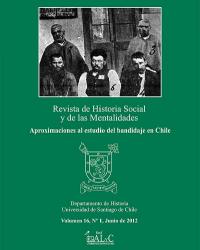FAR AWAY, SO CLOSE...” RISE AND FALL IN THE COAL- MINING BORDER. THE CASE OF CURANILAHUE AND LEBU. 1880- 1930
DOI:
https://doi.org/10.35588/psjfhs10Keywords:
Economic History, Regional History, Coal industry, Curanilahue History, Lebu History, XIX century modernizationAbstract
The following piece of work deals with the unequal development registered by two important coal- mining camps in the Gulf of Arauco. During this period, coal industry experiences its greatest development, which is triggered by the market growth in our country, the creation of new routes of transport at an international level and the beginning of World War I. Given these circumstances, Curanilahue becomes the most popular mining center of its time, with a great economical power. The railroad construction which joins this city with Concepción and Lebu, one of the first and most traditional coal-mining centers in Chile, is greatly affected by the 1870 recession, which cannot be defeated in the future. This crisis reveals signs of decay and decline that subjugate this place to a lower position compared to the rest of the coal- mining centers of that time.
Downloads
Downloads
Submitted
2012-08-17Published
Versions
- 2024-12-16 (2)
- (1)
Issue
Section
License
Copyright (c) 2024 Revista de Historia Social y de las Mentalidades

This work is licensed under a Creative Commons Attribution 4.0 International License.













